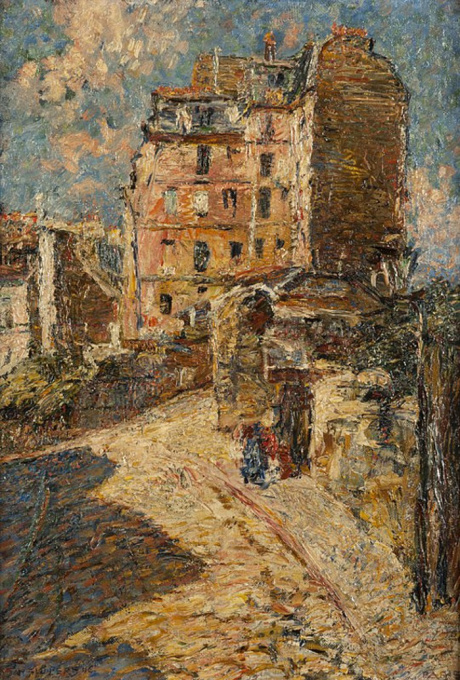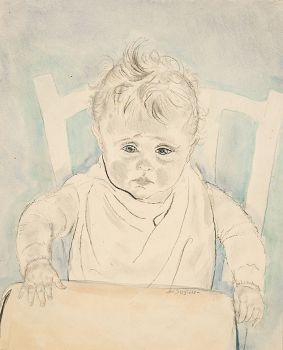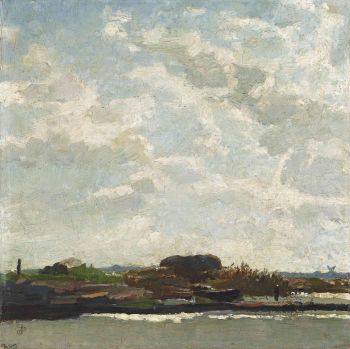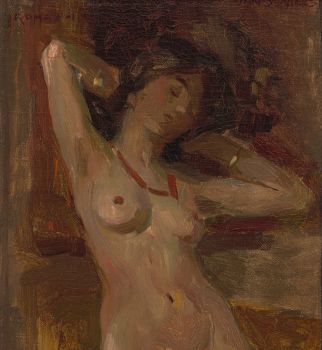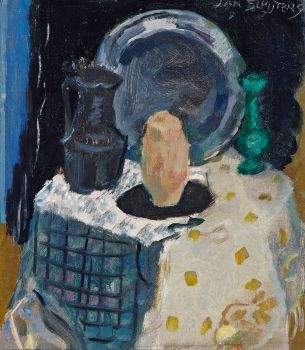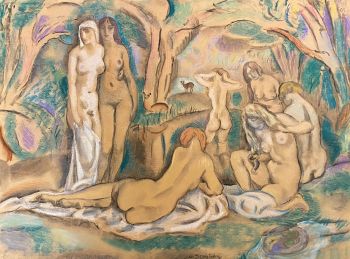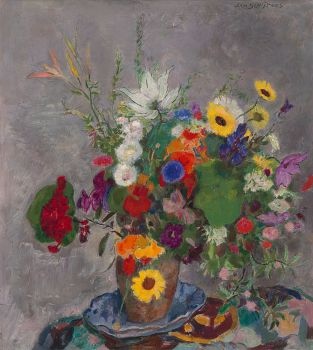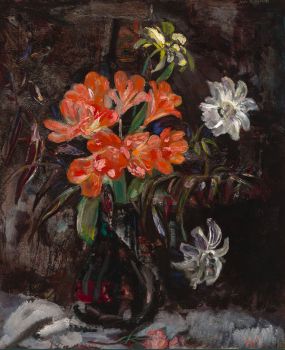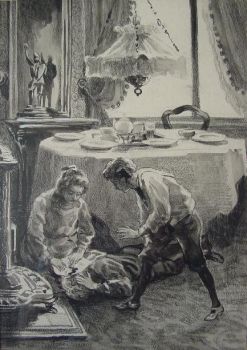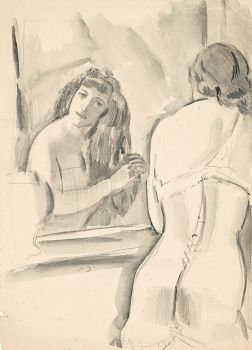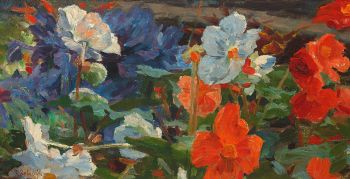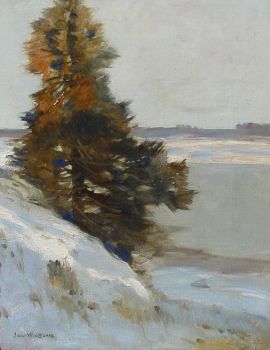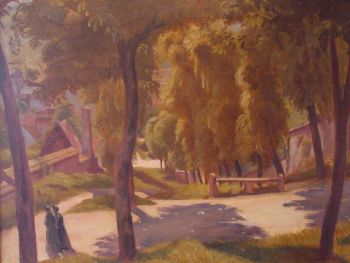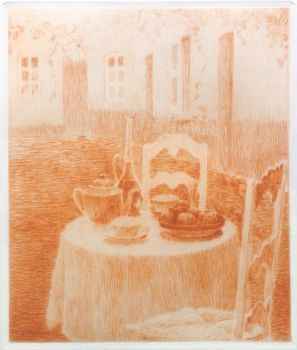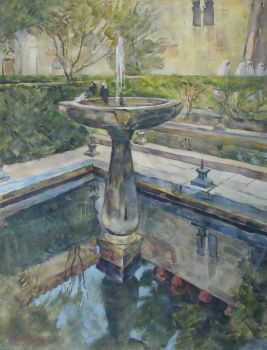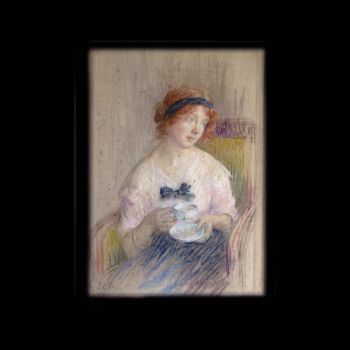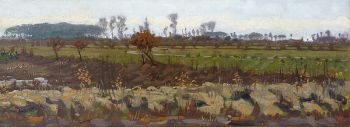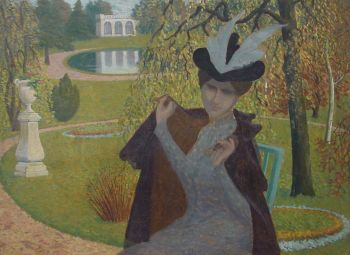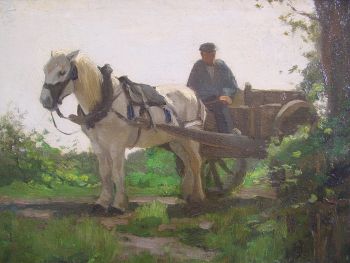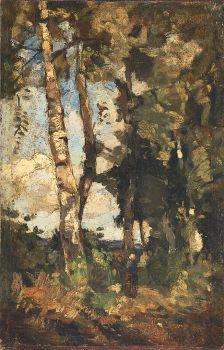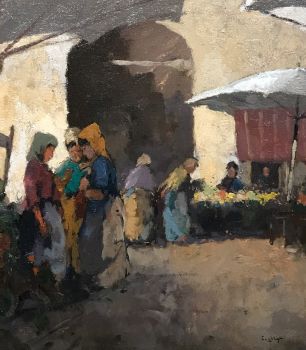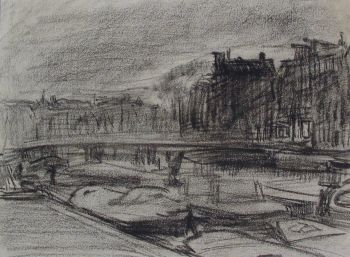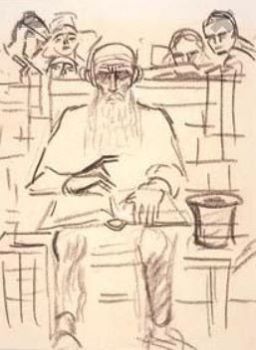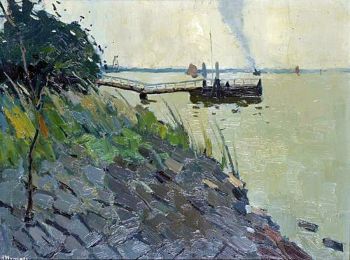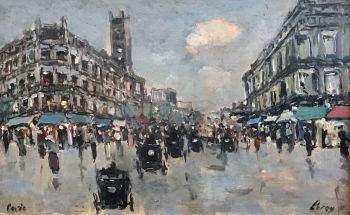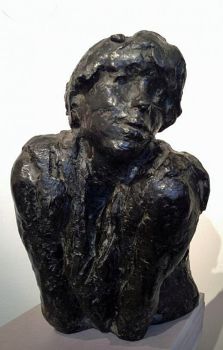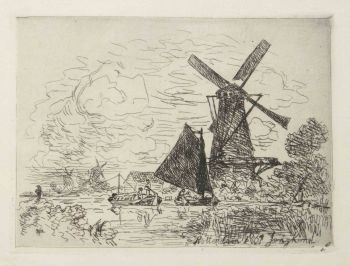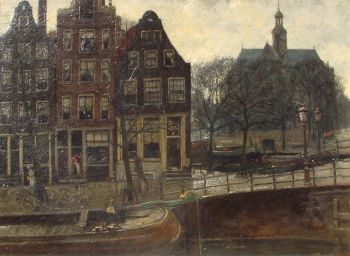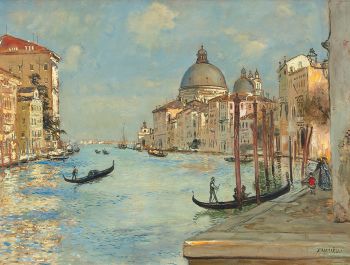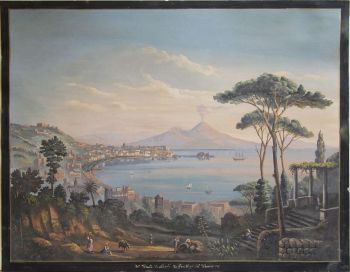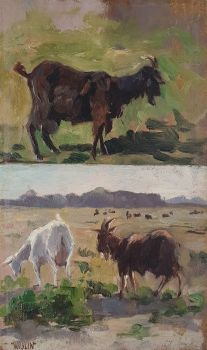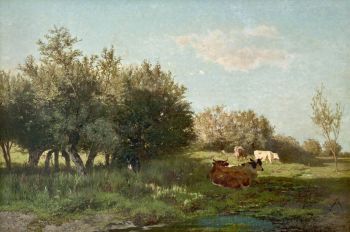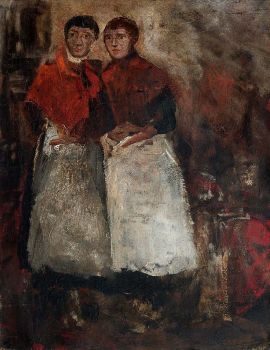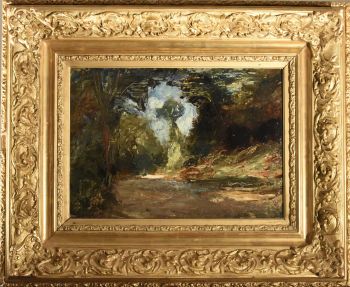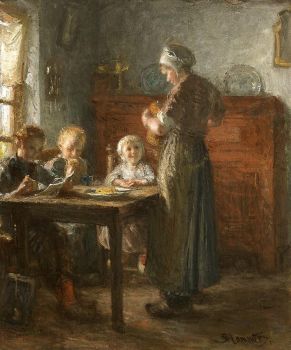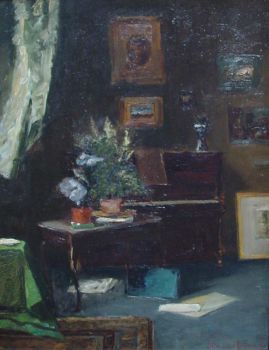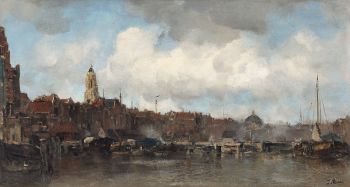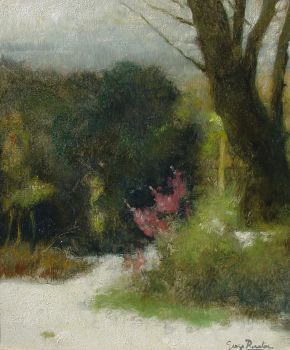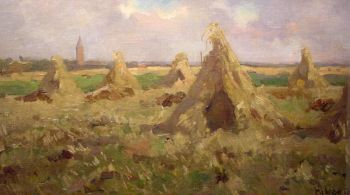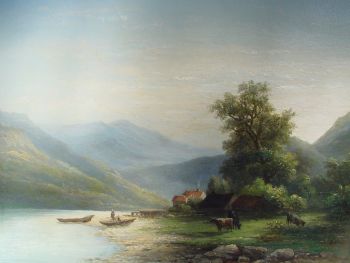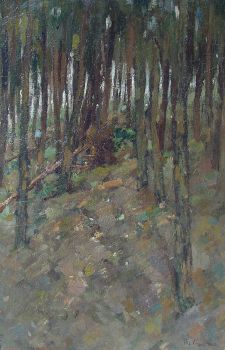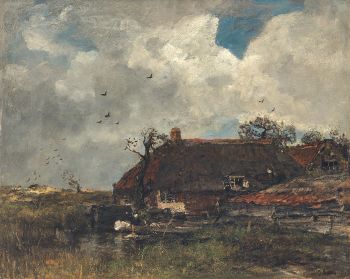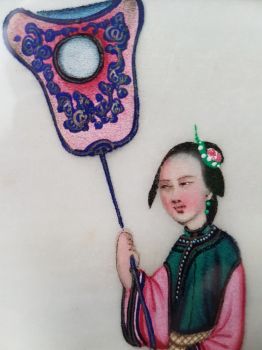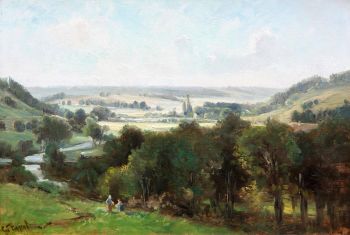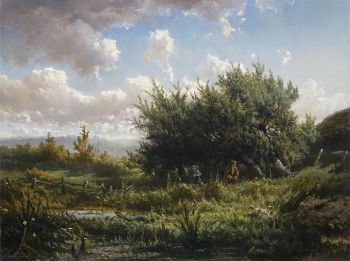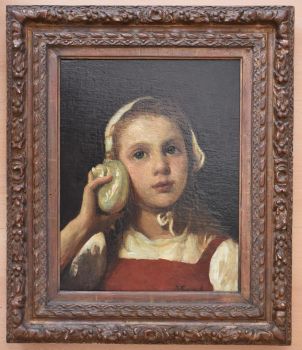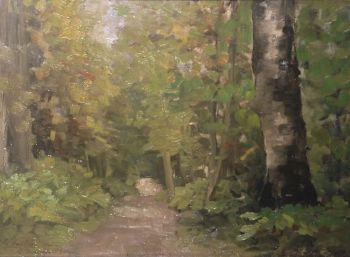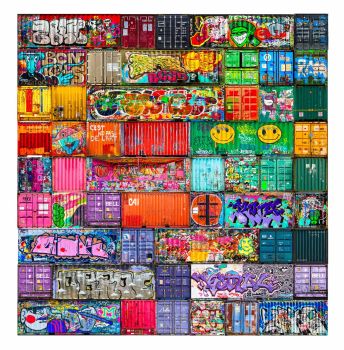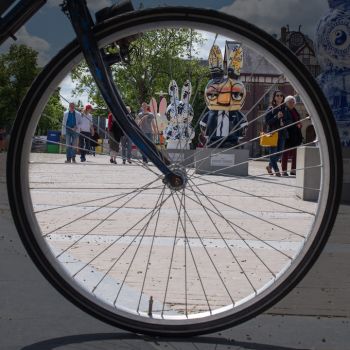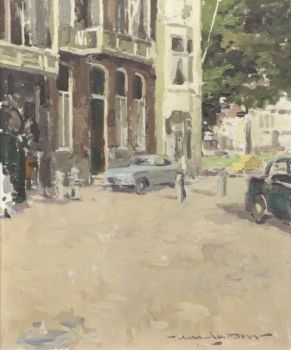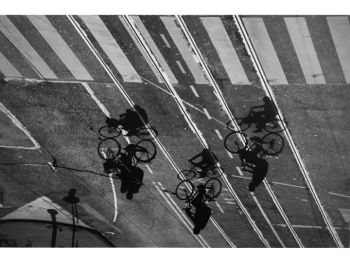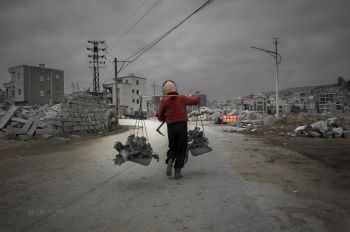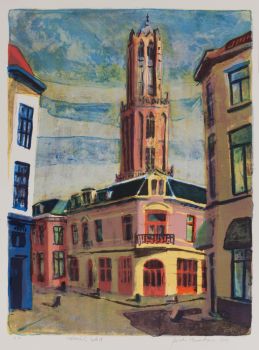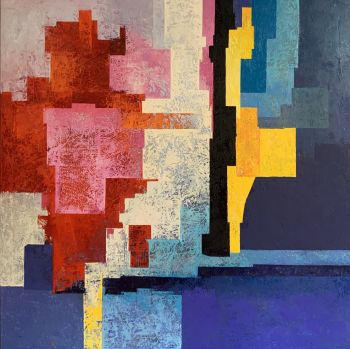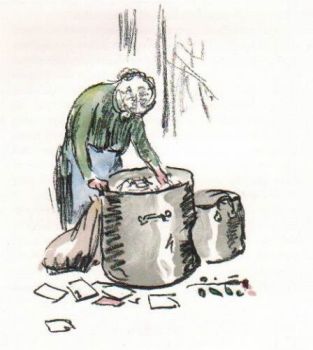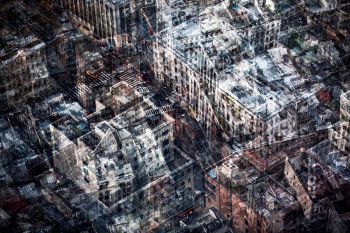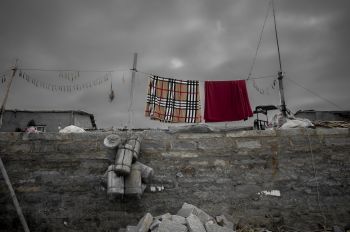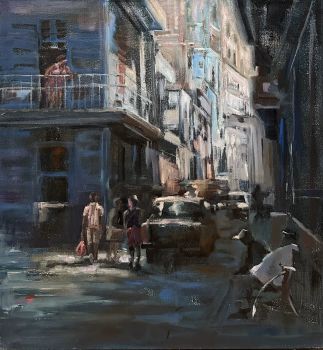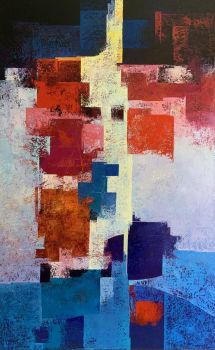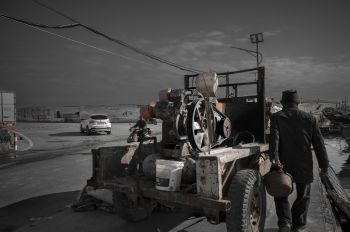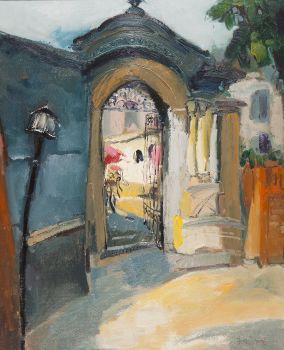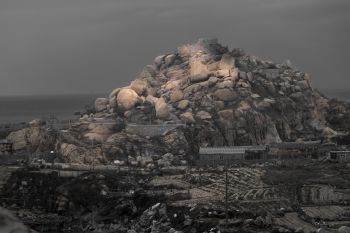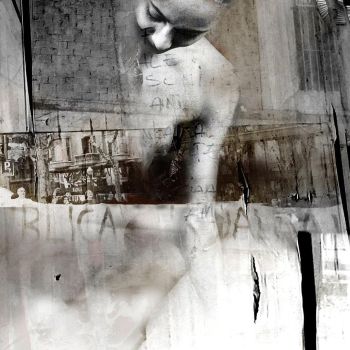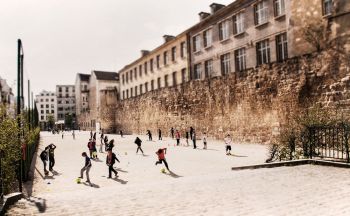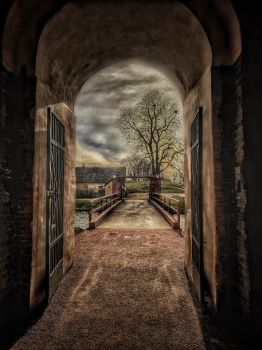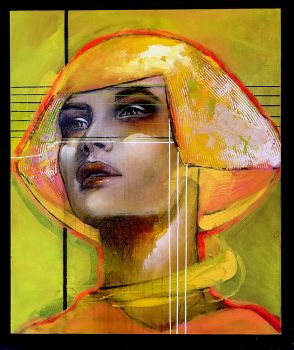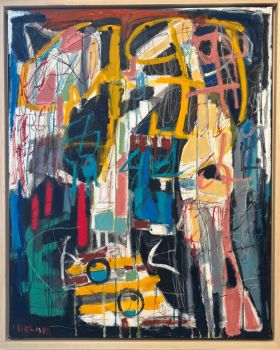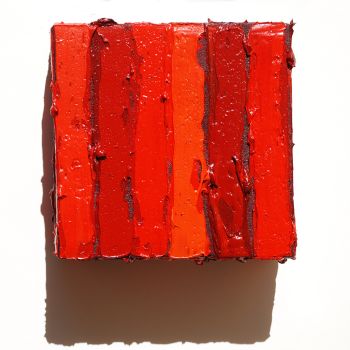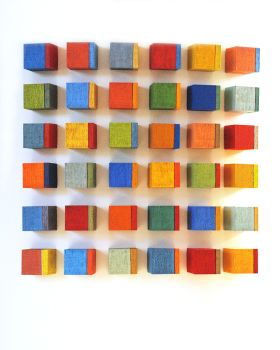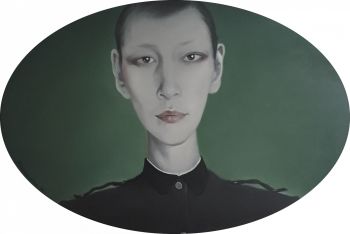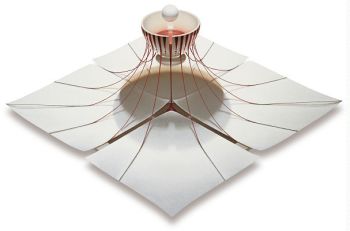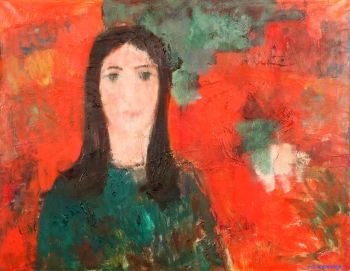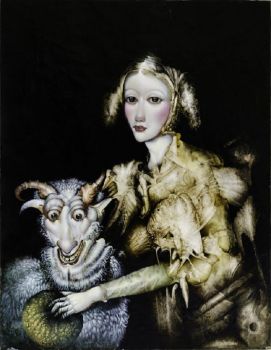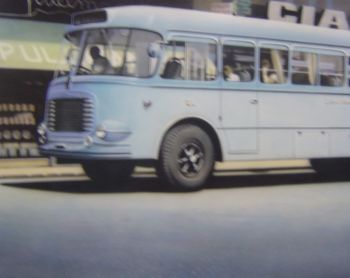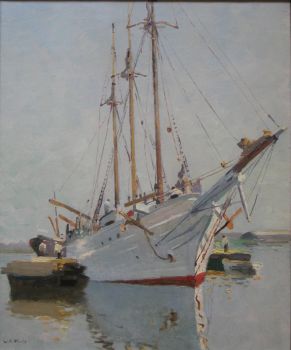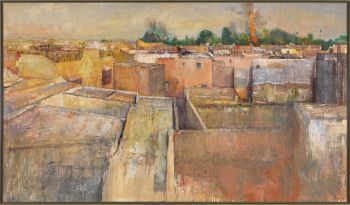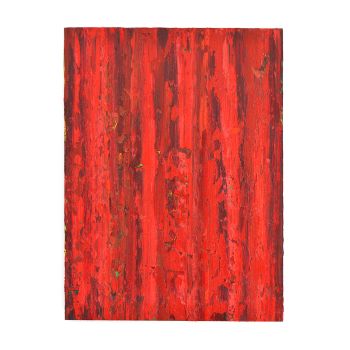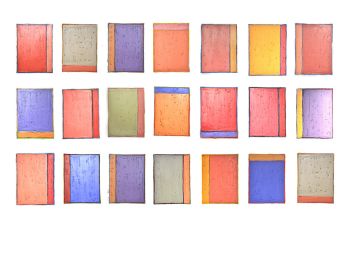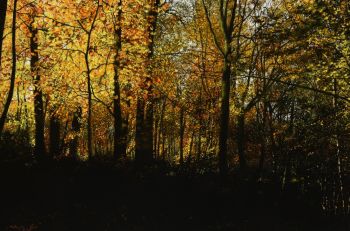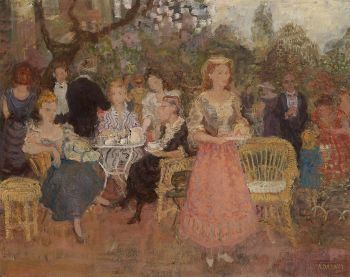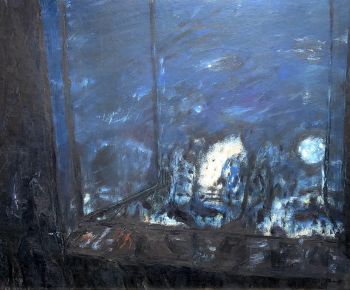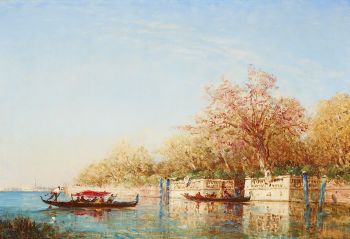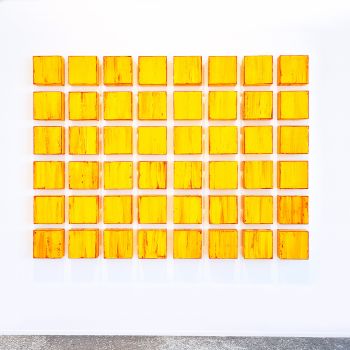Montmartre, Paris 1906
Jan Sluijters
Pittura a olioDipingere
53 ⨯ 36 cm
ConditionExcellent
Attualmente non disponibile tramite Gallerease
- A proposito di opere d'arteOil on canvas, signed and dated (‘06) lower left. Lower right 'Paris'
The work of Jan Sluijters is esteemed of great importance for Dutch Art History. He played a pioneering role in the avant-garde movement of which Piet Mondriaan and Leo Gestel were also a part. In 1904 Sluijters won the Prix de Rome. This government subsidy gave him the opportunity to study for four years abroad, beginning in Rome. Here Sluijters studied the classics, but after some time he felt the need to broaden his horizons. He travelled to Spain and finally ended up in Paris in 1906, just in time to visit the most important exhibition of the year, the Salon des Independants.
The vibrant artistic environment of Paris in those days gave Sluijters the inspiration that he was looking for. The Fauves started to become popular, the first general exhibition was organised with works by Van Gogh and Kees van Dongen, who had his first solo exhibition. All these influences and contacts are reflected in this painting by Sluijters depicting the artists' quarter of Montmartre.
Lit: This painting is included in the catalog raisonné of the artist by the National Institute for Art History (RKD) in The Hague: Jacqueline de Raad, Annemiek Rens, Ton Geerts: 'Jan Sluijters: Het geschilderde oeuvre', RKD Monographs 2014
Provenance: Kunsthandel M. L. de Boer, Amsterdam, no. 9833, 1972 - A proposito di opere artista
Jan Sluijters nacque a Den Bosch nel 1881. Era figlio di Gijsbertus Antonius Sluijters. Lo stesso Jan Sluijters ebbe tre figli chiamati Jan Sluijters (jr.), Lous Sluijters ed Eliza Sluijters insieme a M.F. van Cooten. I suoi generi erano Jacob Kuijper e Kuno Brinks. I suoi dipinti presentano studi di nudi, ritratti, paesaggi e nature morte.
Jan Sluijters, insieme a Piet Mondriaan e Leo Gestel, si distingue come uno degli artisti moderni olandesi veramente pionieristici. Nei suoi primi anni, Sluijters ha sperimentato molti stili diversi.
Dopo le sue visite a Parigi il suo stile divenne più espressivo e apparteneva maggiormente al cubismo e al futurismo. Una parte particolarmente importante della sua opera sono i suoi paesaggi luministici risalenti al suo primo periodo.
Dopo il suo periodo espressionista nel piccolo villaggio di Staphorst nel 1916, Sluijters iniziò a dipingere ritratti e nudi realistici. Un certo numero di strade sono intitolate a lui nei Paesi Bassi, inclusa una nel quartiere di strade intitolate a pittori olandesi del XIX e XX secolo a Overtoomse Veld-Noord, Amsterdam.
Jan Sluijters morì ad Amsterdam nel 1957.
Artwork details
Related artworks
Jan Sluijters
Original illustration of Sluijters for the book: 'Laura's opstel'1881 - 1957
Prezzo su richiestaKunsthandel Pygmalion
1 - 4 / 12Carel Nicolaas Storm van 's Gravesande
View on Venice1841 - 1924
Prezzo su richiestaKunsthandel Pygmalion
Albert Clouard
Élégante à la cape (Elegant lady with a cloak)1866 - 1900
Prezzo su richiestaKunsthandel Pygmalion
H.J. van der Weele
Horse and carriage in landscape1850 - 1900
Prezzo su richiestaKunsthandel Pygmalion
Raoul Hynckes
Riverview with scaffolding (near Kinderdijk, the Netherlands)1913 - 1924
Prezzo su richiestaKunsthandel Pygmalion
Dirk Johannes van Haaren
Brouwersgracht in Amsterdam (near Noordermarkt)1904
Prezzo su richiestaKunsthandel Pygmalion
1 - 4 / 24Gerard Bilders
The 'Uiterwaarden' at Oosterbeek (flood plains)1861
Prezzo su richiestaStudio 2000 Art Gallery
Carel Nicolaas Storm van 's Gravesande
My studio in Bruxelles1841 - 1924
Prezzo su richiestaKunsthandel Pygmalion
Corstiaan Hendrikus de Swart
Mountain landscape with Lake1838 - 1900
Prezzo su richiestaKunsthandel Pygmalion
H.J. van der Weele
Horse and carriage in landscape1850 - 1900
Prezzo su richiestaKunsthandel Pygmalion
1 - 4 / 24- 1 - 4 / 24
Rene Rietmeyer
''Installation Miami-Beach 2006''2006
Prezzo su richiestaEuropean Cultural Centre Collection
Rene Rietmeyer
"Japan, Tokyo, Kudan House" 20212021
Prezzo su richiestaEuropean Cultural Centre Collection
1 - 4 / 24

